You are using an out of date browser. It may not display this or other websites correctly.
You should upgrade or use an alternative browser.
You should upgrade or use an alternative browser.
Interesting Facts and Stories
- Thread starter Louis
- Start date
Harmless ... unless you were the cabbage.
Operation Barbarossa is often portayed as early sweeping victories ... but the blood toll on the German side was very heavy from the start.
In fact, July 1941 was the deadliest month of the war for the Germans with approx 63 000 deaths ... not surpassed until the Stalingrad winter battles of 1942/43.
In addition, during the June 1941, the first 9 days of Barbarossa, the Wehrmacht suffered approximately 25 000 killed in action ... in effect, the Ostheer was "winning itself to death" long before the Russian winter set in.
In fact, July 1941 was the deadliest month of the war for the Germans with approx 63 000 deaths ... not surpassed until the Stalingrad winter battles of 1942/43.
In addition, during the June 1941, the first 9 days of Barbarossa, the Wehrmacht suffered approximately 25 000 killed in action ... in effect, the Ostheer was "winning itself to death" long before the Russian winter set in.
- Joined
- Oct 11, 2010
- Messages
- 13,116
- Reaction score
- 8,135
- Age
- 61
Kurt Knispel's body was found
The tomb of Feldwebel (Sergeant) Kurt Knispel, nicknamed the "black baron" (September 20. 1921 - April 28, 1945) finally found April 10, 2013 in the village of Vrbovec (Urbau in german), Moravia. Knispel was recognized for his plate. In the same tomb would have remains of between 11 and 21 german soldiers who died in a local hospital in the last days of the war. All were buried only cotton shirts, behind a church.-
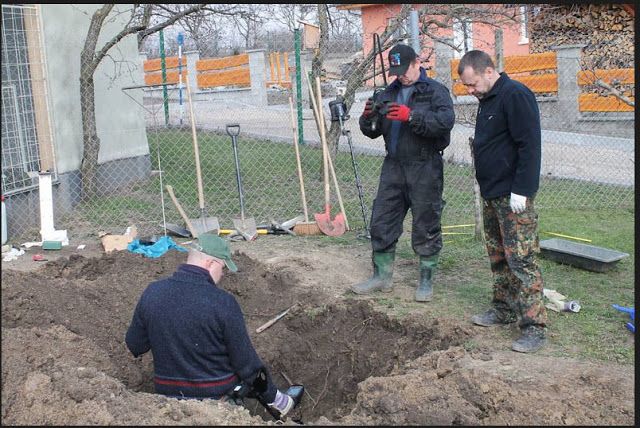
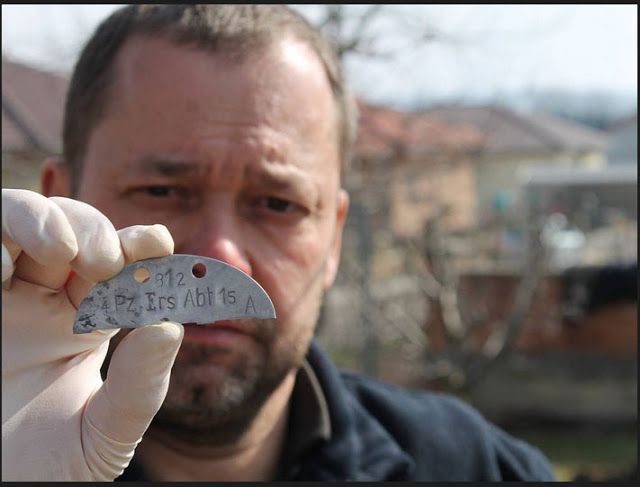
The circumstances surrounding his death are several versions, one of them mentions that after his tank was damaged by Russian fire, as he and his crew abandoned him, was shot and wounded in the abdomen, another says he was severely wounded by the explosion caused by impacting Russian fire your tank, at the point where ammunition was stored.-
Anyway, finally receive the burial it deserves this ace of aces, who died just 10 days to the end of the WW2 in Europe.
The tomb of Feldwebel (Sergeant) Kurt Knispel, nicknamed the "black baron" (September 20. 1921 - April 28, 1945) finally found April 10, 2013 in the village of Vrbovec (Urbau in german), Moravia. Knispel was recognized for his plate. In the same tomb would have remains of between 11 and 21 german soldiers who died in a local hospital in the last days of the war. All were buried only cotton shirts, behind a church.-


The circumstances surrounding his death are several versions, one of them mentions that after his tank was damaged by Russian fire, as he and his crew abandoned him, was shot and wounded in the abdomen, another says he was severely wounded by the explosion caused by impacting Russian fire your tank, at the point where ammunition was stored.-
Anyway, finally receive the burial it deserves this ace of aces, who died just 10 days to the end of the WW2 in Europe.
- Joined
- Oct 11, 2010
- Messages
- 13,116
- Reaction score
- 8,135
- Age
- 61
One of the most famous stories of Roman decadence concerns Nero, the emperor who blithely “fiddled while Rome burned†during the great fire of 64 A.D. According to some ancient historians, the emperor had ordered his men to start the fire in order to clear space for his new palace. But while Nero was certainly no saint—he reportedly ordered the murder of his own mother during his rise to power—the story of his fiendish fiddling is likely exaggerated.-
While some ancient chroniclers did describe the music-loving emperor as singing while he watched flames consume the city, the historian Tacitus would later denounce these claims as vicious rumors. According to him, Nero was away at Antium during the early stages of the blaze, and upon returning to Rome helped lead rescue and rebuilding efforts and even opened his palace gardens to those who lost their homes.-
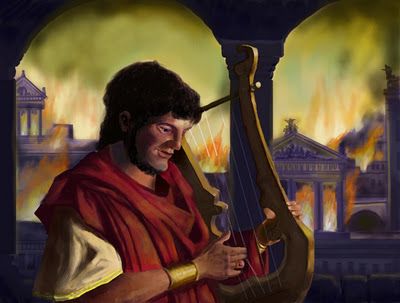
A further strike against the legend is that the fiddle would not even be invented for several hundred years. If Nero played any instrument while Rome burned—which remains up for debate—it would most likely have been a cithara, a kind of lyre.-
While some ancient chroniclers did describe the music-loving emperor as singing while he watched flames consume the city, the historian Tacitus would later denounce these claims as vicious rumors. According to him, Nero was away at Antium during the early stages of the blaze, and upon returning to Rome helped lead rescue and rebuilding efforts and even opened his palace gardens to those who lost their homes.-

A further strike against the legend is that the fiddle would not even be invented for several hundred years. If Nero played any instrument while Rome burned—which remains up for debate—it would most likely have been a cithara, a kind of lyre.-
G
Guderian
Guest
" Few surviving sources paint Nero in a favorable light"
- Joined
- Oct 11, 2010
- Messages
- 13,116
- Reaction score
- 8,135
- Age
- 61
The actress Dorothy Lamour (December 10, 1914 – September 22, 1996) during WW2 was known for her volunteer working selling war bonds during tours in which movie stars would travel the country selling U.S. government bonds to the public. Lamour reportedly sold $300 million worth of bonds earning her the nickname "The Bombshell of Bombs".-
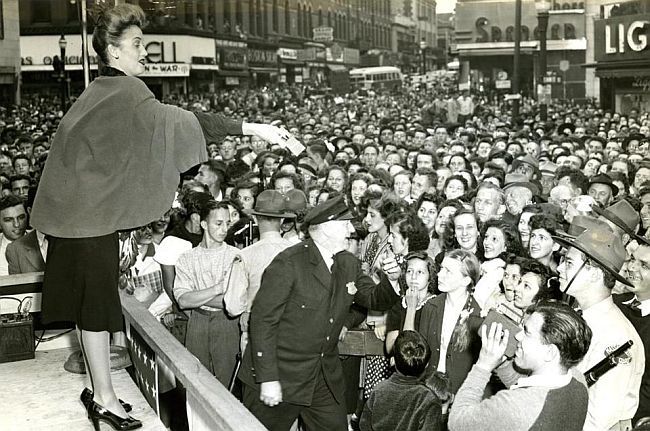
On Sept. 11, 1942: Lamour sold War Bonds at a rate of $22,204 per minute in Fall River from a platform downtown. She worked at the job of selling for three hours and took in $3,996,792. More than 25,000 people jammed the streets surrounding City Hall to see her auction off the cigarette case in her hand for $11,000 in bonds.-
In 1965, Lamour was awarded a belated citation from the United States Department of the Treasury for her war bond sales.-

On Sept. 11, 1942: Lamour sold War Bonds at a rate of $22,204 per minute in Fall River from a platform downtown. She worked at the job of selling for three hours and took in $3,996,792. More than 25,000 people jammed the streets surrounding City Hall to see her auction off the cigarette case in her hand for $11,000 in bonds.-
In 1965, Lamour was awarded a belated citation from the United States Department of the Treasury for her war bond sales.-
On Sept. 11, 1942: Lamour sold War Bonds at a rate of $22,204 per minute in Fall River from a platform downtown.
Had they sold war bonds during our 2 most recent wars, we might not be in such a financial bind as we are today. Then again, perhaps they were afraid to try. You know, "What if they gave a war and nobody came?"
- Joined
- Oct 11, 2010
- Messages
- 13,116
- Reaction score
- 8,135
- Age
- 61
Almost 80% of the males born in the Soviet Union in 1923 did not survive World War II.-
from ww2review.blogspot.com.ar
from ww2review.blogspot.com.ar
- Joined
- Oct 11, 2010
- Messages
- 13,116
- Reaction score
- 8,135
- Age
- 61
US Army Private Desmond T. Doss, (February 7, 1919 – March 23, 2006) became the first conscientious objector to receive the Medal of Honor during ww2.-
Drafted in April 1942, Desmond Doss refused to kill, or carry a weapon into combat, because of his personal beliefs as a Seventh-day Adventist. He consequently became a medic, and by serving in the Pacific theatre of World War II.-
He went overseas with the 307th Infantry, 77th Infantry Division, in the summer of 1944 and served as a combat medic on Guam and at Leyte in the Philippines, receiving the Bronze Star, before taking part in the battle for Okinawa in the spring of 1945.
Private Doss was accompanying troops in the battle for a 400-foot-high ridge on Okinawa, the Maeda Escarpment, on Saturday, May 5 when the Japanese counterattacked. Many of the Americans were driven off the ridge, but wounded soldiers were stranded atop it.
Private Doss remained with the wounded, and, according to his Medal of Honor citation, he refused to seek cover, carrying them, one by one, in the face of enemy fire. He lowered each man on a rope-supported litter he had devised, using double bowline knots he had learned as a youngster and tying the makeshift litter to a tree stump serving as an anchor. Every wounded man was lowered to a safe spot 35 feet below the ridgetop, and then Private Doss came down the ridge unscathed.
After engaging in additional rescue efforts under fire over the next two weeks, Private Doss was wounded by a grenade that riddled him with shrapnel. He cared for his injuries alone for five hours, rather than have another medic emerge from cover to help him. While he was finally being carried off on a litter, he spotted a soldier who seemed worse off. He leaped off the litter, directing his aid men to help the other soldier.
Soon after that, Japanese fire hit him, and he suffered a compound arm fracture. He bound a rifle stock to his shattered arm as a splint, evidently the closest he ever came to handling a weapon, and crawled 300 yards to an aid station.
President Harry S. Truman presented him with the Medal of Honor on Oct. 12, 1945, for his actions on Okinawa.

nytimes.com
collegedale-americanlegion.org
militaryphotos.net
wiki
Drafted in April 1942, Desmond Doss refused to kill, or carry a weapon into combat, because of his personal beliefs as a Seventh-day Adventist. He consequently became a medic, and by serving in the Pacific theatre of World War II.-
He went overseas with the 307th Infantry, 77th Infantry Division, in the summer of 1944 and served as a combat medic on Guam and at Leyte in the Philippines, receiving the Bronze Star, before taking part in the battle for Okinawa in the spring of 1945.
Private Doss was accompanying troops in the battle for a 400-foot-high ridge on Okinawa, the Maeda Escarpment, on Saturday, May 5 when the Japanese counterattacked. Many of the Americans were driven off the ridge, but wounded soldiers were stranded atop it.
Private Doss remained with the wounded, and, according to his Medal of Honor citation, he refused to seek cover, carrying them, one by one, in the face of enemy fire. He lowered each man on a rope-supported litter he had devised, using double bowline knots he had learned as a youngster and tying the makeshift litter to a tree stump serving as an anchor. Every wounded man was lowered to a safe spot 35 feet below the ridgetop, and then Private Doss came down the ridge unscathed.
After engaging in additional rescue efforts under fire over the next two weeks, Private Doss was wounded by a grenade that riddled him with shrapnel. He cared for his injuries alone for five hours, rather than have another medic emerge from cover to help him. While he was finally being carried off on a litter, he spotted a soldier who seemed worse off. He leaped off the litter, directing his aid men to help the other soldier.
Soon after that, Japanese fire hit him, and he suffered a compound arm fracture. He bound a rifle stock to his shattered arm as a splint, evidently the closest he ever came to handling a weapon, and crawled 300 yards to an aid station.
President Harry S. Truman presented him with the Medal of Honor on Oct. 12, 1945, for his actions on Okinawa.

nytimes.com
collegedale-americanlegion.org
militaryphotos.net
wiki
- Joined
- Oct 11, 2010
- Messages
- 13,116
- Reaction score
- 8,135
- Age
- 61
The London Beer Flood of 1814
On 16 October 1814, seven people died when brew vats at the Meux and Company Brewery in London broke and spilled 1.487 million litres onto city streets, drowning some, fatally injuring others, and even giving one guy alcohol poisoning.-
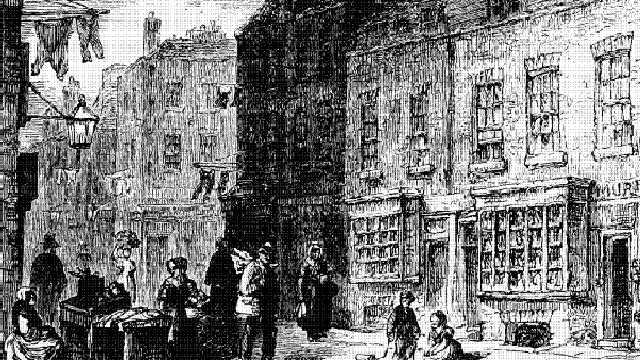
On 16 October 1814, seven people died when brew vats at the Meux and Company Brewery in London broke and spilled 1.487 million litres onto city streets, drowning some, fatally injuring others, and even giving one guy alcohol poisoning.-

What a way to go!
Lot of hangovers the next day I bet.
68 years ago today, the United States dropped the first atomic bomb on Hiroshima. This photo of the city shows the aftermath of the explosion (© IWM Q (HS) 832, http://www.iwm.org.uk/collections/item/object/205087494). ‪#‎OnThisDay‬


G
Guderian
Guest
i am not . the cmh means what the troopers think.. i hear THEMHic....! Im on my way... LOL
G
Guderian
Guest
RE. the pic bootie put up a few posts back
the nippon build[lt] in wood.
you see the woe..all blown flat in initial blast then burnt in 2000 degree temporary flash
and thats just a 'tactical nuke' [under 20 kt]
200 kt leaves no structures as you see them.
1 to 5 mt you wont want that world... ever
the nippon build[lt] in wood.
you see the woe..all blown flat in initial blast then burnt in 2000 degree temporary flash
and thats just a 'tactical nuke' [under 20 kt]
200 kt leaves no structures as you see them.
1 to 5 mt you wont want that world... ever
Last edited by a moderator:

MajorErich Rudorffer(born 1 November 1917) is a Germanformer Luftwaffe fighter ace, one of a handful who served with the Luftwaffe through the whole of World War II. He is the 7th most successful fighter pilot in the history of air warfare, and currently both the oldest jet fighter ace, and the most successful ace still living. Rudorffer claimed a total of 222 victories, fighting in all the major German theaters of war, including the European and Mediterranean Theatre of Operations and the Eastern Front. During the war he flew more than 1000 combat missions, was engaged in aerial combat over 300 times, was shot down by flak and enemy fighters 16 times and had to take to his parachute 9 times. His 222 aerial victories include 58 heavily armoured Il-2 Sturmovik ground attack aircraft. He was also responsible for sinking a British submarine.
Rudorffer got his first victory over a Curtiss Hawk 75, on 14 May 1940. He scored eight more times before the capitulation of France. He flew throughout the Battle of Britain, and legend has him being pursued down Croydon High Street below rooftop level by a Hurricane. He achieved his nineteenth victory on 1 May 1941; he was then awarded the Ritterkreuz of the Iron Cross and appointed Staffelkapitänof 6./Jagdgeschwader 2(JG 2) "Richthofen" the following month. By the end of December 1941 he had claimed 40 kills.
In 1942 Rudorffer participated in Operation Cerberus(Channel Dash) and flew over the Allied landings at Dieppein August 1942. After 45 victories in November 1942 his unit was transferred south to Sicily and later Tunisia. On 9 February 1943 Rudorffer claimed to have defeated 8 British pilots during a 32-minute aerial battle, and collected his first multiple victories. Again on 15 February he was victorious over 7 allied aircraft. Among his victories over North Africa are 10 Allied bombers.
In July 1943 Hauptmann Rudorffer was appointed to command II./Jagdgeschwader 54(JG 54) on the Eastern Front. He claimed his first victory in that theater on 7 August. Due to the experience gained by fighting the RAF he achieved incredible success. During his first sortie on 24 August 1943, 5 Soviet aircraft were downed in 4 minutes. On 11 October 1943 Erich Rudorffer wrote history when during 17 minutes he claimed 13 kills.
Erich Rudorffer earned his nicknameFighter of Libauon 28 October 1944 near the Latvian city ofLibau. While preparing to land he spotted a Soviet task force of about 60 close air support aircraft on its way to attack Libau airfields. He broke off the landing and engaged the enemy without any backup. He drove off the attackers, shooting down nine enemy aircraft within 10 minutes.
In the winter of 1944, Major Rudorffer was trained on the Messerschmitt Me 262 Jet fighter. In February 1945 he was recalled to command I./Jagdgeschwader 7(JG 7). Between December 1944 and beginning of April 1945 the I./JG 7 operated from the then newly-built Luftwaffe Airbase in Kaltenkirchen north of Hamburg. So he seems to have been Group Commander more or less for the one month of March 1945. Rudorffer claimed 12 victories with the Me 262, to bring his total to 222.
His tally included 136 on the Eastern Front, 26 in North Africa and 60 on the Western Front including 10 heavy bombers.

Rudorffer on 21 June 1944. In the background is his wingman, Unteroffizier Kurt Tangermann

Adolph Gysbert Malan, DSO& Bar, DFC& Bar (24 March 1910 – 17 September 1963), better known as Sailor Malan (he was in the merchant marine before the war) was a famed South African World War II RAF fighter pilot who led No. 74 Squadron RAF during the height of the Battle of Britain. Malan was known for sending German bomber pilots home with dead crews as a warning to other Luftwaffe crews.[ Under his leadership No. 74 became one of the RAF's best units. Malan scored 27 kills, seven shared destroyed, three probably destroyed and 16 damaged
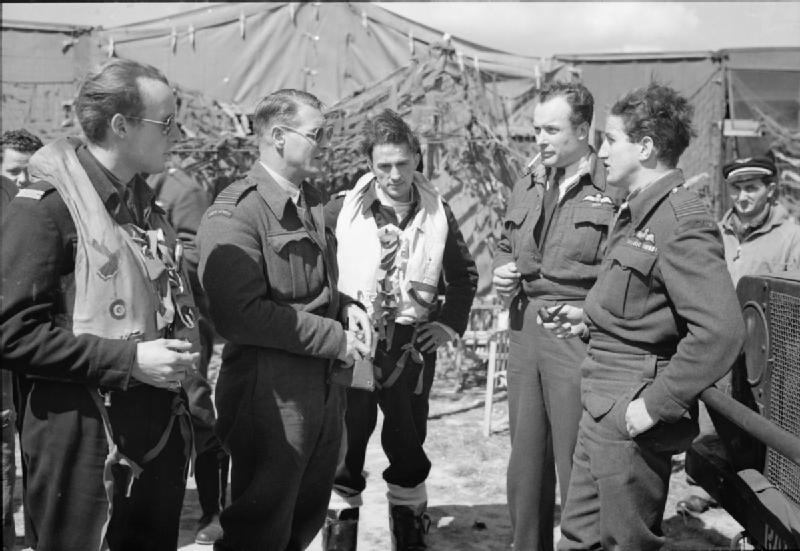
Group Captain A G Malan (second from left), Commanding Officer of No 145 (Free French) Wing discusses the operational situation on the morning of 'D-Day' with some of his pilots at Merston, Sussex. On the left stands Free French pilot, Lieutenant Raoul Duval; second from the right is the Wing Leader, Wing Commander W V Crawford-Compton; third right is Commandant C Martell, Commanding Officer of No. 341 (Free French) Squadron RAF
Although not an instinctive, gifted pilot Malan was an exceptional shot and a very aggressive air fighter, and above all a superb tactician who instilled the methods and techniques he had honed in 1940 into successive generations of young fighter pilots who followed him.
Malan developed a set of simple rules for fighter pilots, to be disseminated throughout RAF Fighter Command, which eventually could be found tacked to the wall of most airbases:
TEN OF MY RULES FOR AIR FIGHTING
- Wait until you see the whites of his eyes. Fire short bursts of one to two seconds only when your sights are definitely "ON".
- Whilst shooting think of nothing else, brace the whole of your body: have both hands on the stick: concentrate on your ring sight.
- Always keep a sharp lookout. "Keep your finger out".
- Height gives you the initiative.
- Always turn and face the attack.
- Make your decisions promptly. It is better to act quickly even though your tactics are not the best.
- Never fly straight and level for more than 30 seconds in the combat area.
- When diving to attack always leave a proportion of your formation above to act as a top guard.
- INITIATIVE, AGGRESSION, AIR DISCIPLINE, and TEAMWORK are words that MEAN something in Air Fighting.
- Go in quickly - Punch hard - Get out!
Less well know is that Malan was also involved in a tragic early war friendly fire incident... in fact, it's thought that the first planes the RAF shot down in WW2 were their own.
The Battle of Barking Creek
No. 74 Squadron saw its first action only 15 hours after war was declared, sent to intercept a bomber raid that turned out to be returning RAF planes. On 6 September 1939, "A" Flight was scrambled to intercept a suspected enemy radar track and ran into the Hurricanes of No. 56 Squadron RAF. Believing 56 to be the enemy, Malan ordered an attack. Paddy Byrne and John Freeborn downed two RAF aircraft, killing one officer, Montague Hulton-Harrop, in this friendly fire incident, which became known as the Battle of Barking Creek. At the subsequent courts-martial, Malan tried to evade responsibility for the attack. He testified for the prosecution against his own pilots stating that Freeborn had been irresponsible, impetuous, and had not taken proper heed of vital communications. This prompted Freeborn's counsel, Sir Patrick Hastings to call Malan a bare-faced liar. The court ruled the entire incident was an unfortunate error and acquitted both pilots
G
Guderian
Guest
- Never fly straight and level for more than 30 seconds in the combat area.
- INITIATIVE, AGGRESSION, AIR DISCIPLINE, and TEAMWORK are words that MEAN something in Air Fighting.
[5 actually 1 to build 4 for parts].
A honey of a plane.
i could buy one now.
http://www.raptoraviation.com/aircraft spec pages/Mig17.html
but thats' no fun
getting hands dirty is a philosophy i hold dear.
zen and the art of combat jet maintenance.
i want to slap dayglow stickers on each plane at russian park.
with a zenon pen ,mark each. so what i picked is what is shipped.
on arrival , put 1k on managers desk and say . you stock of mig 17's..........
a few thusand to park manager is a good idea. money well spent.
and pay to gut 2 more for engines and electrics [parts] engine being topmost
more so a Fw 190d. thats a real dream.
thanks for barking creek.. i learnt a new thing.
dont be american and do then think.
i d your target
Last edited by a moderator:



























































































































